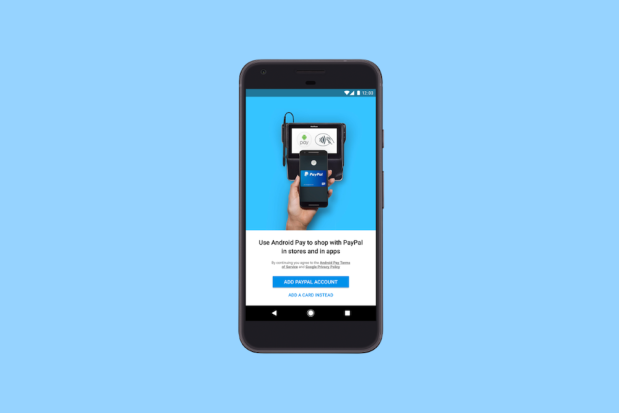PayPal And Android Pay Take Commerce To Chrome

Almost exactly one month ago, PayPal and Google made some news with a payment partnership that made PayPal a payment option inside of Android Pay wherever Android Pay is accepted — in-store, in-app and online.
Yesterday, they did one better.
Coming soon, to an Android phone near you — Android Pay users who link their PayPal accounts to those Android Pay accounts will be able to pay at any one of the 16 million merchants that accept PayPal today when they shop via the Chrome mobile web browser. Users will need only their fingerprints to authenticate — no user username or password necessary.
“The new facet of the [Android Pay] partnership is really two things,” PayPal COO Bill Ready told Karen Webster yesterday. “The first is that Android Pay inside of Chrome will have tight coupling with PayPal. And importantly, when a user adds PayPal to Android Pay, we are going to allow those Android Pay users to shop at our PayPal merchants.”
Ready told Webster that this multi-channel mobile team up was in many ways a natural extension of the both the work the two firms have been doing together for some years and PayPal’s core mission to become the operating system for digital commerce.
“Android is the biggest operating system in the world — and our job is to enable commerce in a variety of new contexts,” Ready said. “With Android Pay and Android’s reach, we see an opportunity for consumers and merchants to find and create many new contexts and touchpoints. We are excited to be part of that journey.”
And, as it turns out, that journey is ongoing — and moving along a pretty rapid pace.
Better Access For All — No Complexity Added
The fundamental goal as PayPal and Google were collaborating, Ready noted, was building a low friction buying experience for users on Android devices that would “give consumers a delightful experience and the ability of merchants to delight their customers.”
Google’s Pali Bhat, VP of Payments Products at Google, noted that leveraging the ubiquity of Chrome and PayPal’s extensive reach means that the two firms can jointly take on the central pain point in mobile commerce.
“Mobile checkout remains one of the biggest sources of friction in the commerce experience, and we’re excited to collaborate with PayPal on enabling streamlined checkout experiences for all Android Pay and PayPal users,” Bhat observed.
The win-win in the situation is obvious, Ready told Webster — millions of PayPal merchants get instant access to Android Pay customers, and Android Pay customers will get a better, more seamless commerce experience when they are using their Chrome browser to shop. Ready said that the combined benefit of PayPal’s buyer and seller protection, payment authentication and OS level protection with Android Pay will be accelerated for Android Pay users, given the two-sided network PayPal brings along with it.
Ready told Webster that getting this functionality up and going for a merchant is identical to what they needed to do to enable OneTouch: exactly nothing. Provided, he said, that Android Pay users have linked their PayPal account to Android Pay.
“Three years ago the narrative was that Google, Facebook, Visa and Mastercard were all going to be our competitors in the space,” Ready said. “What we are seeing today is that when it comes to those magical experiences that other players want to enable, we are one of the best players in the ecosystem to help get them built and running. There is no one else who can say across millions of merchants and 75 percent of the top 100 internet retailers that they can light this [capability] up immediately with no additional work or integration.”
What’s Next
The service is coming soon to an Android phone near you in the U.S., Ready said, and fast. He estimates that the rollout will happen over the next few weeks — yes, weeks. Desktop users and those surfing the web on the iPhone using Chrome browser are out of luck.
For now, anyway.
Android, as Ready pointed out, is the most widely used mobile OS on Earth, and Chrome is the most widely adopted browser on the web, and PayPal is the most ubiquitous name in the game when it comes to digital payments.
The set up, Webster observed, has all the makings for a cross-platform commerce play that is both unique and uniquely capable of scaling on a global basis.
After all, Chrome use outpaces Safari — Apple’s native browser — on iOS by a whopping 127 percent, which means there are already a lot of iOS users out there who’ve shown themselves to be perfectly willing to use the Google version of a product, if Google does it better.
Hold that thought.
